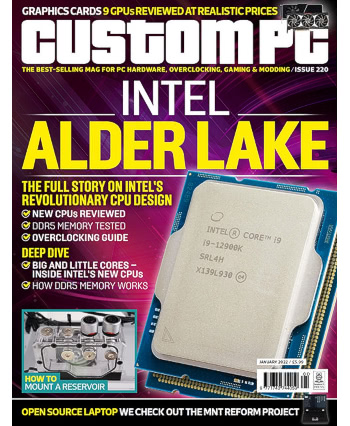
I’ve covered Andrew “bunnie” Huang’s continued work on the Infrared In-Situ (IRIS) silicon inspection project, a vacuum-tube PDP-8 clone, the third-generation “wafer scale” chip from Cerebras, and a 30-cubit quantum computer for your desk – in simulation, at least — along with an “invisible drone,” the KingKong edge AI camera system, and an “inception” attack against virtual reality users.
In chronological order:
- The Open Beam Interface Offers Digital Image Capture From Almost Any Scanning Electron Microscope
- Renesas Promises High-Efficiency Edge AI, Computer Vision for Your Next Robot with the RZ/V2H
- Digilent’s Analog Discovery Pro 2230 Aims to Deliver Pro-Grade Oscilloscope Functions in Compact Box
- Chen Liang Brings the Multimedia PC to Modern Microcontrollers with an FMV MPEG-1 Decoder
- James Brown Publishes a Bill of Materials for His Impressive Volumetric POV Display
- The ThingPulse ePulse Feather C6 RISC-V Development Board Promises an ~18µA Low-Power Sleep Mode
- Peter Seibold Finds a New Use for the Vintage AGP Slot, Doubling the Throughput of a Retro-Style NAS
- Stefan Wagner’s Development Board Adapter Is a Flexible Friend for Microcontroller Experimentation
- Kevin Santo Cappuccio’s Jumperless Breadboard Gets a High-Speed Probe Mode for Rapid Rewiring
- Scott Leggett Cracks a GoodWe Solar Inverter, Smart Meter for Local Prometheus Monitoring
- Orlie’s Coffee Machine Upgrade Boosts Accessibility By Swapping a Touchscreen for Chunky Buttons
- Yuri Electric Co.’s Kaki Pi Packs a Renesas RZ/V2H for High-Performance Edge AI Robotics and More
- Liz Clark’s MEMENTO Smart Camera Sends Images to OpenAI for Textual Descriptions and More
- Cal Bryant Takes Charge of His PC’s Cooling System with a Clever Python Script and Grafana
- BrainChip’s Neuromorphic Akida Goes Orbital as Optimus-1 Takes the ANT61 Brain Computer Into Space
- David R. Carroll’s M5Stack M5StickC Plus Tetris Uses a Clever Single-Button Input Scheme
- Tenstorrent Launches Its RISC-V-Powered AI Inference Acceleration Boards, the Grayskull e75 and e150
- Evan Allen’s TTL-to-Composite Adapter Board Aims to Give Video Outputs to Retro Gear — And More
- Richard Körber Brings a Commodore A1060 “Sidecar” Back to Life — with a Few Modern Tweaks
- STMicro Goes Concurrent with Multi-Protocol BLE, Zigbee, Thread, and Matter STM32WBA55, -54 Chips
- This Thin Magnetic Rectangle Could Power High-Performance, High-Efficiency Spintronic Computers
- Golioth Platform Updates Hands Device Management, Over the Air Updates to Free-Tier Users
- This NVIDIA Jetson-Powered “Invisible Drone” Disappears From Radar in a Flash
- Lime Micro Unveils the LimeNET Micro 2.0, a Raspberry Pi CM4-Powered LimeSDR XTRX Radio Powerhouse
- STMicro’s STM32 Family Makes the 64-Bit Jump with New Edge AI, 3D-Capable STM32MP Parts
- Edge Impulse Partners with Arm to Integrate with the Arm Keil MDK for Easier, Faster Edge AI
- CHAI Acts as a Smart Espressif ESP8266 Gateway Between Home Assistant and CAME Gates
- AudioWanderer Puts Llamas on Notice with a Raspberry Pi-Powered Physical Winamp-Themed MP3 Player
- Security Researchers Use a Flipper Zero to “Steal” a Tesla Model 3, Fanning the Flames of Ban Plans
- Alex Cranz Finds a “Digital Ghost” Lurking in Her Brother’s Newly-Purchased Smart Home
- Andrew “bunnie” Huang’s IRIS Robot Peers Behind Silicon Chips to Uncover Their Secrets in Minutes
- ILABS’ RP2040 Connectivity Board Offers Wi-Fi, BLE, and Cellular with Raspberry Pi’s Low-Cost MCU
- RAKwireless Releases the RUI3 Source Code, Aims to “Benefit Everyone” Using Its Hardware
- Reconfigurable “Electrostatically Doped” Transistors Could Mean Smaller, More Efficient Chips
- Juan Manuel Fernandez’s Python Library Aims to Improve Stepper Motor Handling on the Raspberry Pi
- Mike Rieker’s PDP-8/V Swaps Digital’s Transistors for a Beastly Vacuum Tube Processor
- Buy It Fix It Turns to ROM Dump Analysis to Pick Out the PIN Locking a Deep Sea Generator Panel
- IO Rodeo Goes Ultraviolet with Its New UV Open Colorimeter Tool for Citizen Scientists
- STMicro Unveils Its “Highest-Performing” Arm Cortex-M-Based STM32s Yet, the STM32H7R/S Range
- Arducam’s KingKong Pairs an OAK-SoM with a Raspberry Pi CM4 for an All-In-One Approach to Edge AI
- Salvatore Sanfilippo Gets the Raspberry Pi Pico Playing Audio Back, No External DAC Necessary
- Rop Gonggrijp Takes the Pain Out of Heltec HTIT-WB32LA Development with an “Unofficial Library”
- TECHiFAB Wants to Prove Memristors’ Capabilities with the Data-Correlating COR-RiSTOR Basic
- Cerebras’ Wafer-Scale Engine 3, the “Fastest AI Chip in the World,” Aims at Rapid Gen AI Training
- These High-Speed Flexible Circuits Can Drive Micro-LED Displays or High-Resolution Touch Sensors
- Stefan Antoszko’s Pink Noise Generator Packs a TI MSP430 and “a Handful of Resistors and Capacitors”
- These “Hair-Thin” Semiconductor Fibers Drive Smart Hats, Shirts, and Watch Straps
- RedirectedDoors+ Puts Door Handles on Robots for Better VR — While Keeping Its Users Contained
- The Raspberry Pi 5’s 3GHz Limit Is Lifted, Thanks to a “Very Not At All Recommended” Firmware
- This Cardboard Boba Fett Helmet Includes a Raspberry Pi-Powered Thermal Vision Mode and Mini-Map
- Valentyn’s Watch-Like Open Source Full-Body Tracker Aims to Deliver Better VRChat Immersion
- SB Components’ Trekko Pico GPS Logger Is a Compact RP2040-Powered Location Logger
- João Santos’ Two-Microcontroller Project Brings Back the Pager with a Web-Connected Twist
- V. Hunter Adams’ Raspberry Pi RP2040 Bootloader Spreads Like a Worm — But with Good Intentions
- Eric Schlaepfer’s “Goodgreat DS3” Clones the Classic Greengate DS3 Apple II Sampler — From Album Art
- LeoDJ’s DongleHider+ Packs Up to Three Logitech-Style Dongles Into a Single Framework Expansion Card
- M5Stack’s Programmable Power Supply Module 13.2 Offers 100W at Up to 30V for Core Boards and More
- MicroPython Plans a New Feature for the Raspberry Pi RP2040: Runtime-Defined USB Device Support
- NXP Partners with NVIDIA to Add TAO Toolkit to eIQ, Speeding Edge AI Development and Performance
- The CSA’s IoT Device Security Specification Promises Better Security, More Transparency
- STMicro Unveils the Entry-Level STM32U0, Drawing as Little as Half the Power of Its Predecessors
- PINE64 Enters the Home Automation Sector with the Privacy-Preserving PineVox Smart Speaker
- Olimex Makes It Easier to Get Old and Retro Systems Talking to Modern Displays with the VGA2HDMI
- Researchers Demonstrate “Inception Attacks” Against Virtual Reality Users
- Cyrill Künzi’s “Cute CO2 Gauge” Puts a Smile on Home Assistant Ventilation Monitoring
- Quokka Aims to Put a 30-Cubit Quantum Computer on Your Desk — in Emulation, at Least
- Tony Goacher Turns to a Laser Cutter as a Silkscreen Alternative for Home-Milled PCBs
- Sonocotta’s Raspberry Pi Media Center Is a Sleek Compact Streaming Box for Your Hi-Fi Setup
- These Energy-Recycling Actuators Can Cut a Robot’s Power Consumption By Up to 97 Percent
- Mike Rankin’s Compact Thermal Camera Packs a High-Performance Parallel Display in a Tiny Footprint
- AcqRel’s Factorio Yosys Project Puts a Fully-Functional RISC-V Core in the Popular Sandbox Game
- Corey Earl’s Taco Chicken Is a Tasty Espressif ESP32 Board for Industrial Control Projects
- The Pickle Pi Is a TRS-80 Model 100-Like Raspberry Pi Zero 2 W Tablet with Mechanical Keyboard
- NVIDIA Launches Its AI Workbench, Aims to Make ML and Gen AI Accessible to All
- A Vulnerability in Hotel RFID Door Locks Opens All Rooms “with a Single Pair of Forged Keycards”
- Renesas Targets Analog Digitalization with the New RA2A2 and Its 24-Bit Sigma-Delta ADC
- GoFetch Rips Secret Keys From Apple’s M-Series Processors Through a New Side-Channel Attack
- Pwn2Own Vancouver 2024 Hands Out More Than $1 Million in Prizes for Wide-Ranging Vulnerabilities
- The Retro Channel’s Video Debug Board Provides Easy Scope Probing for Vintage Hardware
- Nguyen Vincent’s Amulet Is a High-Power Moteus Alternative for Brushless Motor Robotics Projects
- Ryan Murphy’s Line-Power Smart Thermostats Expand Off-the-Shelf Sockets for Home Assistant Heating
- TechxArtisan’s Openterface Mini-KVM Promises an Open Source Approach to Handling Headless Systems
- Self-Heating Concrete, Powered by Paraffin, Could Mean an End to Snow Shoveling
- John Catsoulis’ Upgraded Scamp Family Offers a Platform for Embedded Forth Experimentation
- Undersea “Caller ID” Can Pinpoint Exactly Which Whale Is Calling
- Avnet’s MaaXBoard OSM93 Offers a Raspberry Pi-Like System for Energy-Efficient Edge AI Work
- Renesas’ In-House RISC-V Microcontroller Core Hits the Market as the 48MHz Low-Power R9A02G021 MCU
- Toshiba Expands Its TXZ+ M4K Motor Control Microcontroller Range, Offering Up to 1MB of Code Flash
- Espressif Leaks an ESP32-C5 “BETA3” System-on-Chip and Compact Development Board
- Matthias Rosezky’s Lightweight Head-Tracking Clip Brings a New Dimension to Sim Games
- Ambiq Unveils Its Next-Generation Edge AI Apollo510 Chip, Boasts of Major Efficiency Gains
- BeagleBoard.org Pledges to “Make Computers Open Again” with the New BeagleY-AI Single-Board Computer
- These “Super Permeable” Wearables Promise Comfort in Even the Sweatiest of Scenarios
- SIXSPEED’s Poki Is an Espressif ESP32-S3-Powered Companion Robot for Your Car
- SolidRun Partners with Hailo for a 20 TOPS Hailo-15H-Powered Edge AI System-on-Module
- Alex Fish’s Pescado Delivers Smooth “3D” Rendering on an Espressif ESP32-S3
- Databricks Releases DBRX, a State-of-the-Art Generative AI LLM, Under a Semi-Open Source License
- SparkFun Expands Its Thing Plus Range with a New Edge AI Ready ESP32-S3 Model
- Seeed Studio Announces Official ESPHome Support for Its mmWave Presence Sensor, SenseCAP Indicator
- Nuvoton Launches the M433, a Power-Sipping Microcontroller Built Around the Arm Cortex-M4F
- Jeff Epler’s Adafruit Feather RP2040 Adapter Gets Vintage TTL Computers Talking Modern HDMI
- Seeed Unveils the Compact Matter-Ready XIAO ESP32C6 Dev Board
- Pepe’s PCPU-NANO1 Is a One-Bit Processor Made From a Mere Five Transistors
- El Correo Libre Issue 72
- Over-The-Air: GRCon24 Call for Participation Opens, “Wireless Open Source Supremacy” with Osmocom, Scrap Antennas, and More








 This month’s PC Pro includes a review of something a little out of the ordinary: the open-source, microcontroller-powered OpenScope MZ oscilloscope from Digilent.
This month’s PC Pro includes a review of something a little out of the ordinary: the open-source, microcontroller-powered OpenScope MZ oscilloscope from Digilent. This month’s Hobby Tech column is taken up with a trio of reviews covering the pretty darn impressive
This month’s Hobby Tech column is taken up with a trio of reviews covering the pretty darn impressive